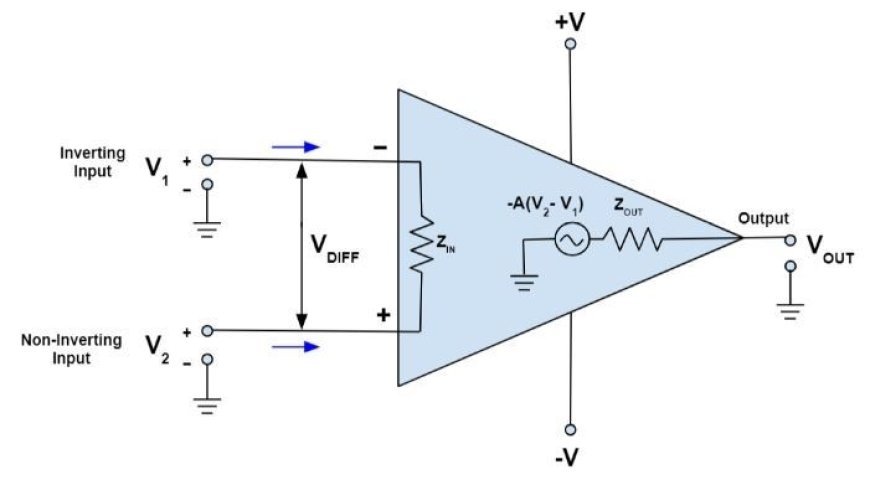CHARACTERSTICS OF OPERATIONAL AMPLIFIER
Operational Amps: Versatile Workhorses - Amplify, Compare, Filter Signals with Ease.

Operational Amplifiers
- An analogue electrical circuit is made up of operational amplifiers, which are its building blocks.
- They work like a DC amplifier and are linear devices.
- Adding resistors or capacitors from the outside to an op amp can change its type of amplifier, such as an inverting amplifier, a non-inverting amplifier, a voltage follower, a comparator, a differential amplifier, a summing amplifier, an integrator, and so on.
- One, two, four, or more OPAMPs are possible. OPAMPs such as the CA3130, CA3140, TL0 71, LM311 and others work very well with very little power and voltage. Along with other inputs, the ideal Op Amp has three important ones.
- For input, there are two types: reversing input and non-inverting input. This is the third contact, which is the output.
- It can both sink and source voltage and current. The output signal is the result of multiplying the input signal by the amplifier's gain.
5 Ideal Characteristics of an Op Amp
1. Open-loop gain
- Open loop gain is the Op Amp's gain when there is no positive or negative input.
- Most OP amps have an open-loop gain of 20,000 to 200,000, but the best ones have an endless gain.
2. Input impedance
- It is the amount of power compared to the energy that comes in. It should go on forever, with no power going from the source to the inputs.
- But most Op Amps will have a few picoamperes of power leak out.
3. Output impedance
- There should be no internal resistance in a perfect Op Amp, and the output impedance should be zero. So that it can give the load attached to the output the full amount of power.
4. Width of the band
- The best operational amplifier (Op Amp) should be able to boost all frequencies, from low-level DC inputs to high-level AC frequencies.
- However, most Op Amps only have a small frequency.
5. Offset
- As long as there is no voltage difference between the sources and output, the op amp should have no output.
- Most Op Amps, on the other hand, will have a small charge coming out of the output when they are turned off.
What's Your Reaction?



































